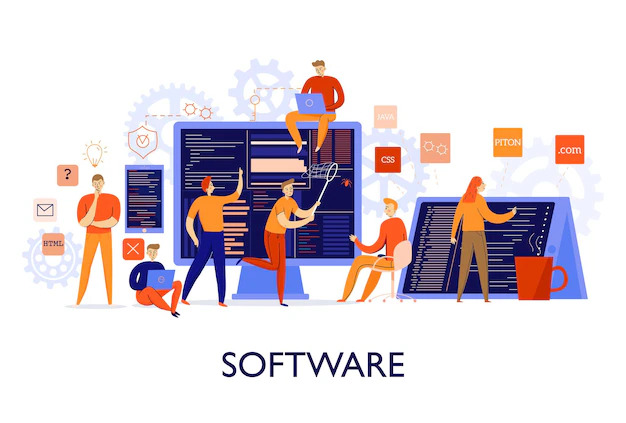Software Development
Innovatex Software specializes in empowering businesses through bespoke Software Development services that drive innovation and efficiency. Our seasoned team of developers meticulously translates your unique ideas and requirements into robust, scalable software solutions. From concept to deployment, we prioritize agility and collaboration, ensuring a seamless development process. Leveraging cutting-edge technologies, we craft custom software applications, tailored to enhance productivity, streamline operations, and meet specific business objectives. Whether it’s web applications, mobile apps, or enterprise-level solutions, Innovatex Software is committed to delivering high-quality, future-proof software that not only meets your immediate needs but also evolves with the ever-changing demands of your industry. Partner with us to harness the transformative potential of tailored software solutions for sustainable growth and digital excellence.


Importance Of Software
- Increased productivity
- Enhanced Decision-Making
- Scalability
- Improved customer experience
- Personal Convenience
- Security and Privacy
- Innovation and Creativity
- Business Operations and Management
- Automation and Efficiency
Types of Software
System Software:
- Operating Systems (OS): Examples include Windows, macOS, Linux, and Android. These manage hardware resources and provide a platform for other software.
- Device Drivers: Software that facilitates communication between hardware devices and the operating system.
Application Software:
- Productivity Software: Includes word processors (Microsoft Word, Google Docs), spreadsheets (Microsoft Excel, Google Sheets), and presentation software (Microsoft PowerPoint, Google Slides).
- Web Browsers: Software like Chrome, Firefox, and Safari for accessing the internet.
- Graphics Software: Used for image editing (Adobe Photoshop), graphic design (Adobe Illustrator), and 3D modeling (AutoCAD).
- Media Players: Software for playing audio and video files, such as VLC Media Player and Windows Media Player.
- Communication Software: Includes email clients (Outlook, Thunderbird), instant messaging apps (WhatsApp, Slack), and video conferencing tools (Zoom, Skype).
Development Software:
- Integrated Development Environments (IDEs): Tools like Visual Studio, Eclipse, and IntelliJ IDEA for software development.
- Compilers and Interpreters: Translate high-level programming languages into machine code (e.g., GCC for C/C++, Python interpreter).
- Version Control Systems: Examples include Git and SVN, used for tracking changes in software development projects.
Security Software:
- Antivirus Software: Protects against viruses, malware, and other security threats (e.g., Norton, McAfee).
- Firewalls: Monitor and control network traffic to enhance security (e.g., Windows Firewall).
Business Software:
- Enterprise Resource Planning (ERP): Integrates various business processes and functions (e.g., SAP, Oracle).
- Customer Relationship Management (CRM): Manages customer interactions and relationships (e.g., Salesforce, HubSpot).
Database Software:
- Relational Database Management Systems (RDBMS): Examples include MySQL, Oracle, and Microsoft SQL Server.
- NoSQL Databases: Like MongoDB and Cassandra, used for non-relational data storage.
Utility Software:
- File Management Utilities: Assist in organizing and managing files (e.g., File Explorer, Finder).
- Disk Cleanup and Optimization Tools: Tools that optimize disk space and performance (e.g., CCleaner).
Educational Software:
- Learning Management Systems (LMS): Platforms for educational content and course management (e.g., Moodle, Blackboard).
Cloud Computing
The on-demand availability of computer system resources, particularly processing power and data storage (cloud storage), without direct user management is known as cloud computing. Accept the power of the cloud and release yourself from the expense and complexity of legacy IT. This is where your enterprise cloud journey begins.
1. Private cloud
2. Public cloud
3. Hybrid cloud
4. Community cloud
5. Distributed cloud
6. Public-resource computing
7. Volunteer cloud
8. Poly cloud
9. Big Data cloud
10. CLOUD VOLUME

